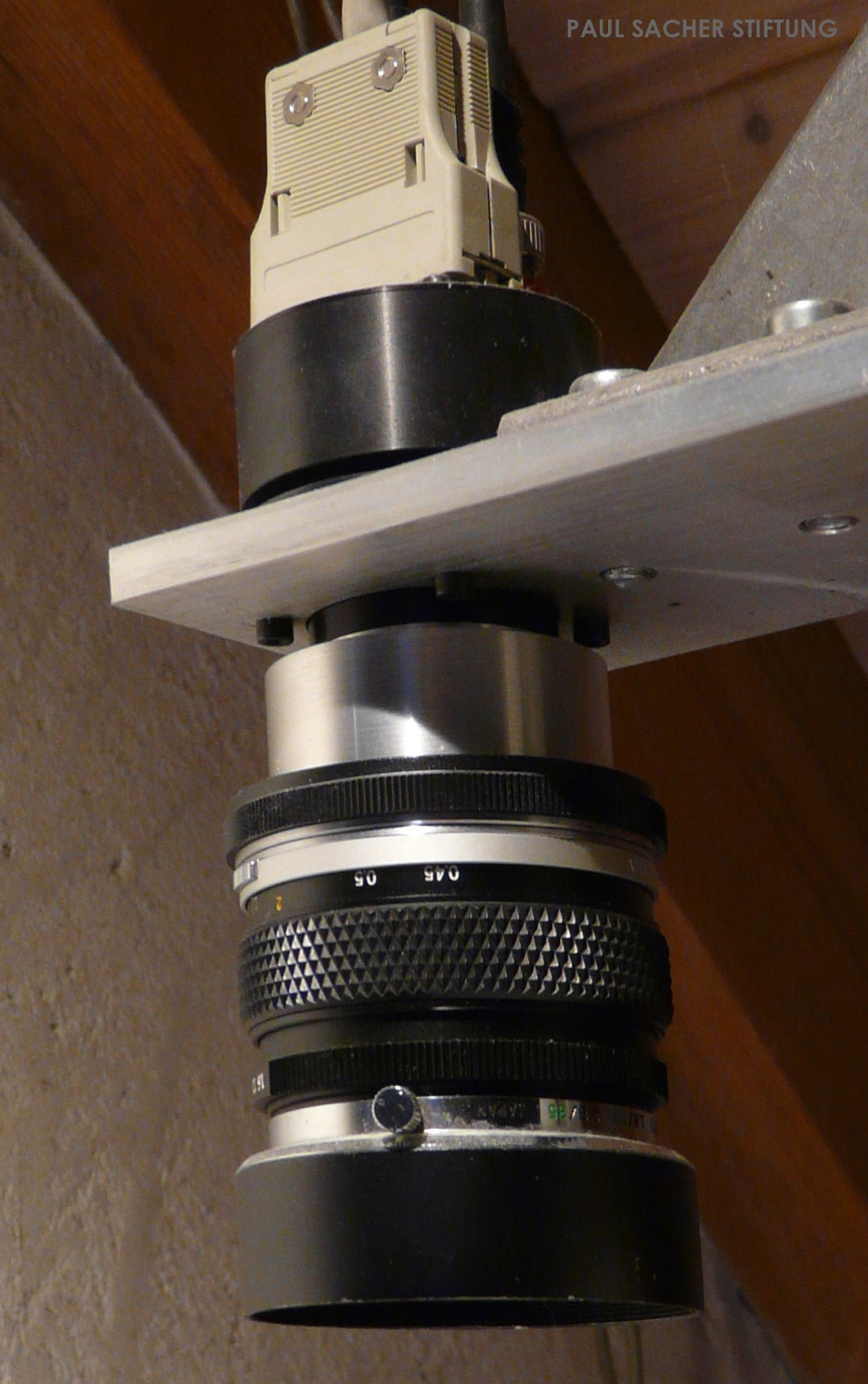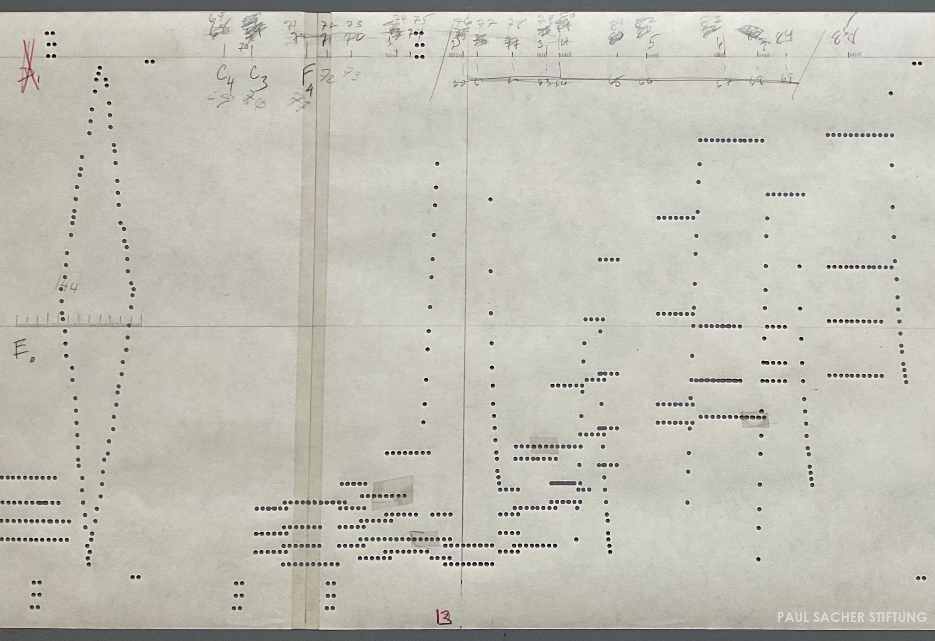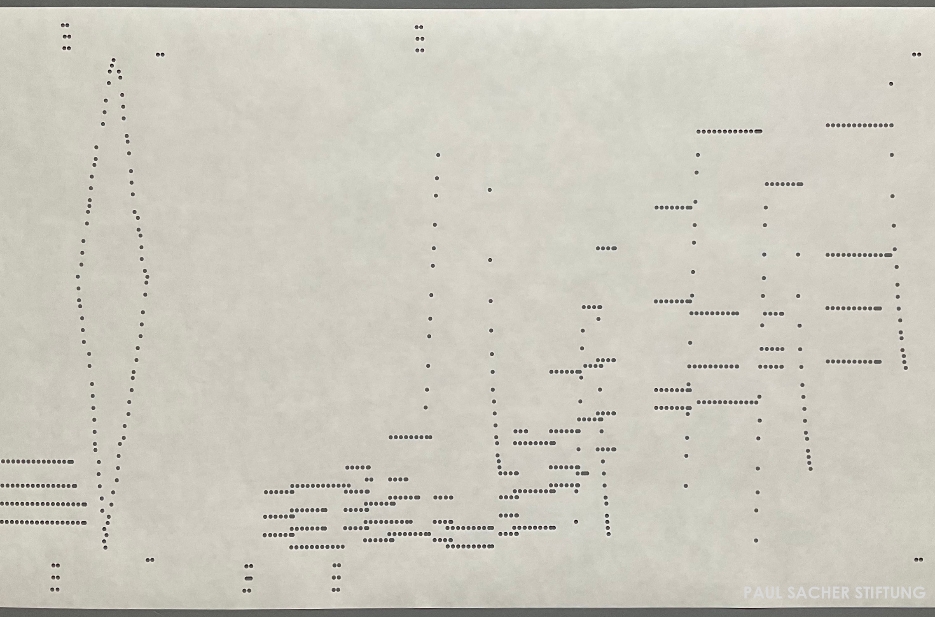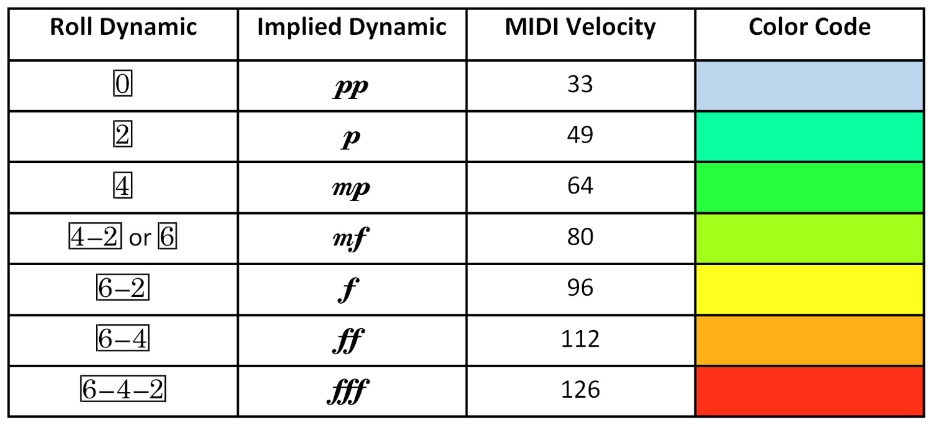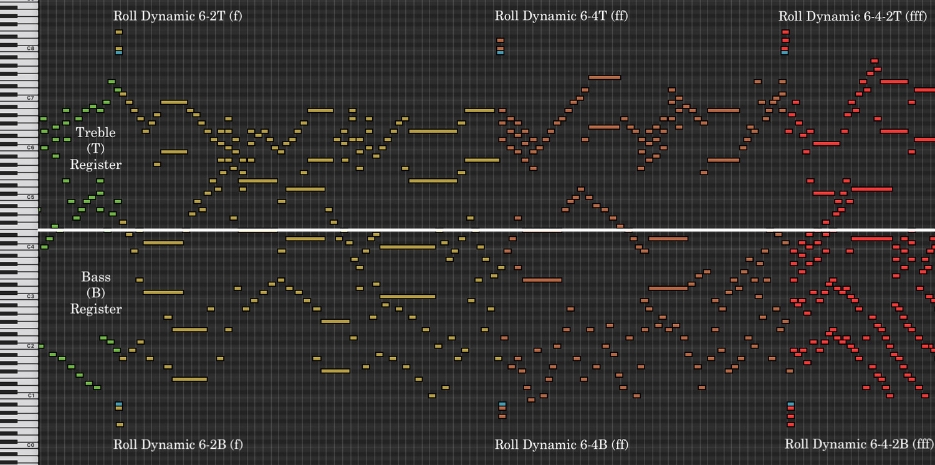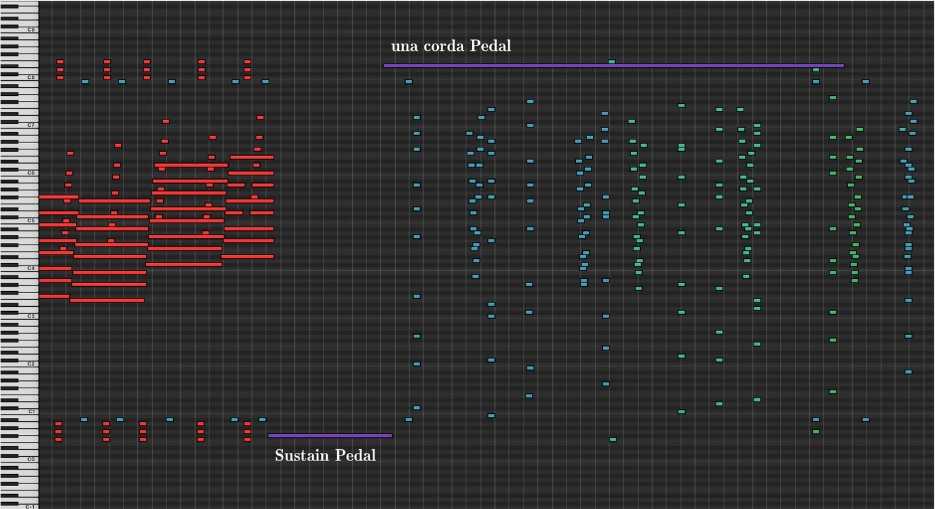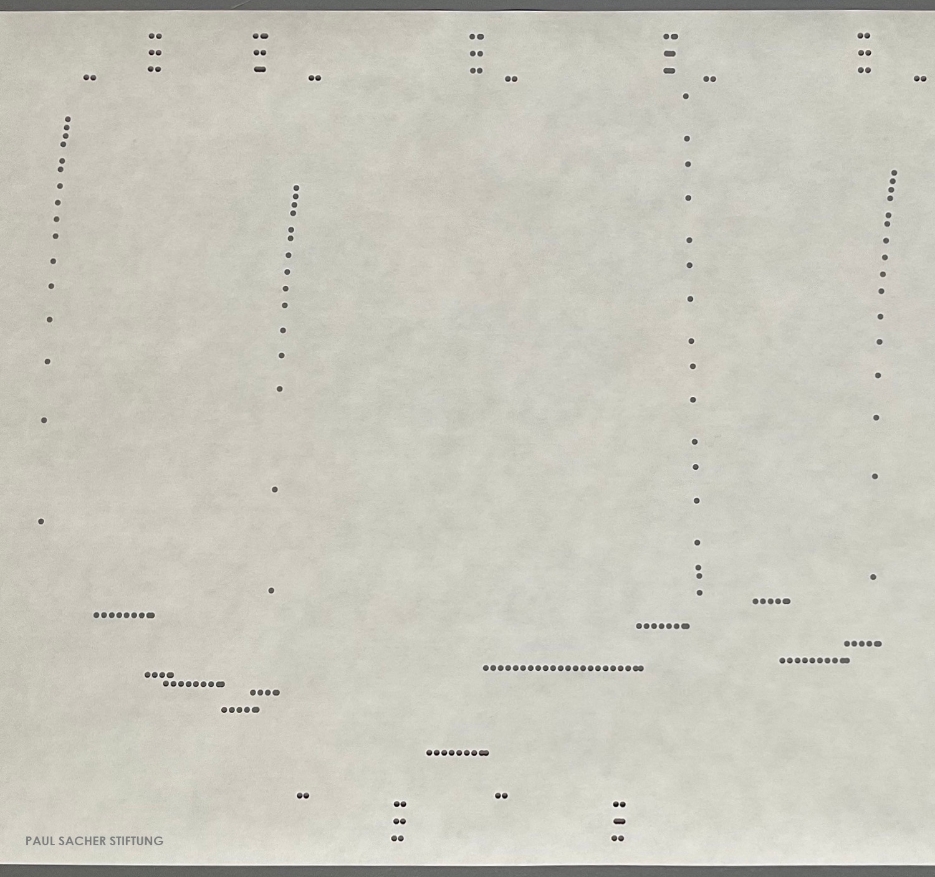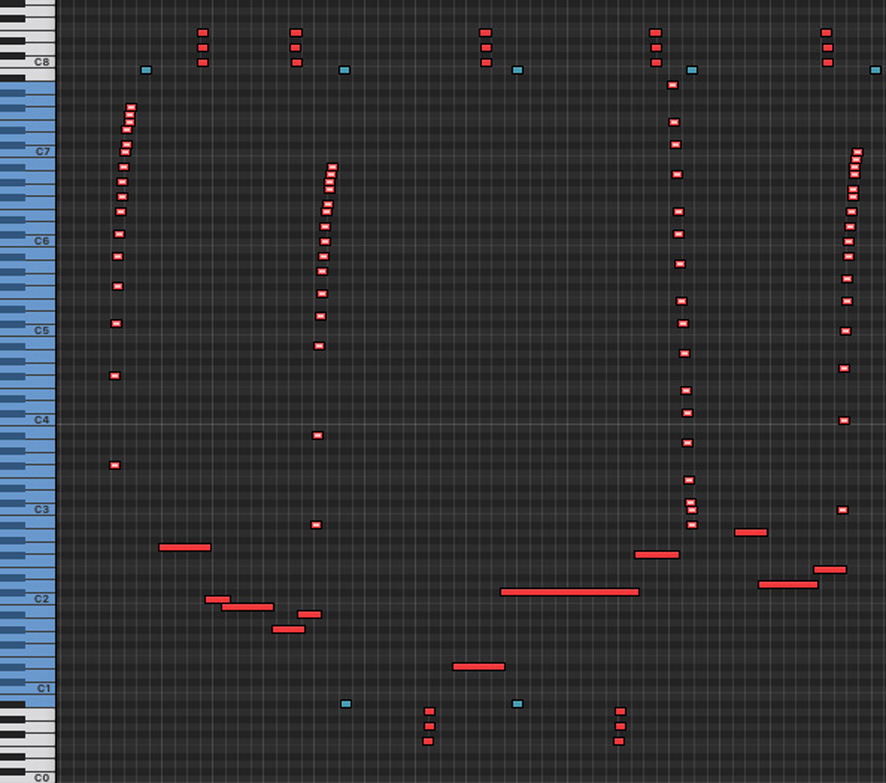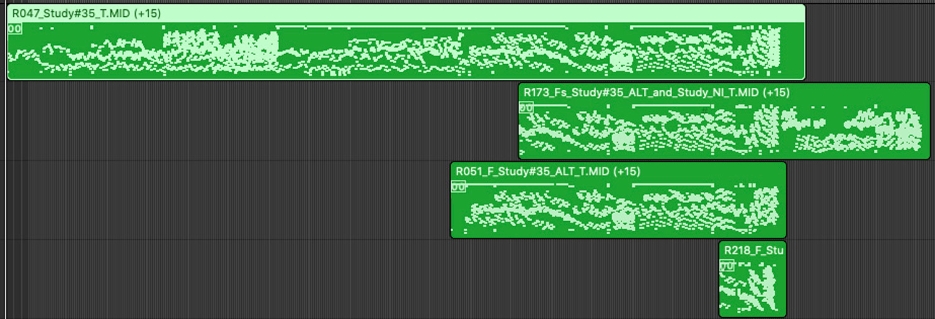Conlon Nancarrow's STUDIES FOR PLAYER PIANO: Towards a Critical Edition
Project Description | Identification of Documents | Acoustic Documentation of the Player Pianos | Nancarrow Sampler | MIDI Files of the Rolls | Music Engraving and Technical Tools | Critical Edition of Selected Works | Online Resources | Research Team and Contact
MIDI Files of the Nancarrow Rolls
The Paul Sacher Foundation owns a collection of MIDI files derived from the optical scans of Nancarrow’s original player piano rolls. Copies of these files have been modified according to the specifications of the Nancarrow Sampler. The optimized files and the sampler combine to create a useful interactive research tool.
Duplication of the Original Rolls
The holdings of the Nancarrow Collection include 280 player piano rolls perforated, annotated, and corrected by the composer or, in a few cases, by Carlos Sandoval, who served as Nancarrow’s assistant between 1991 and 1994. The rolls contain definitive or early versions of complete pieces, fragments, and sketches. In addition, some of them were designed by the composer to test the functioning of the instruments.
Upon acquiring the collection, the Paul Sacher Foundation pursued the realization of faithful copies of the fragile original rolls for the archive. Hans-W. Schmitz, a mechanical-instrument specialist based in Stuttgart (Germany), was in charge of the duplication. He utilized a digital scan camera (CCD line camera, 1024 pixel), a roll-reading device, and a personal computer (Windows 95) equipped with software initially developed at the Fachhochschule für Technik und Wirtschaft in Reutlingen (1992) and enhanced for this commission [Exx. 1 and 2].
In order to manufacture the roll copies, the collected data was converted into MIDI. The obtained duplicates record the exact position of all the definitive perforations in the original rolls in a 1:1 scale. The holes covered with tape in the originals (corrections) are excluded from the duplicates, as are the original annotations and the roll cuts [Ex. 3].
Ex. 3a: Conlon Nancarrow, Study No. 25, original player piano roll (R036) with authorial annotations, corrections, and a roll cut.
Sorting, Preservation, and Modification of the MIDI Files
The MIDI files derived from the optical scans of Nancarrow’s rolls were delivered by Hans-W. Schmitz to the Paul Sacher Foundation in 2018. In a first instance, it was necessary to identify the files, to match them individually with their corresponding original rolls, and to re-label them accordingly.
The MIDI files were also stored as text – a valuable asset for the long-term digital preservation of the materials. This was made possible through a Max MSP patch, generously contributed to the project by Erik Oña.
In a further step, copies of the MIDI files were modified to be properly played with the Nancarrow Sampler. The modifications, made with a MAC computer (macOS Catalina, version 10.15.7) and the software Logic Pro (Version 10.6.2), included:
- Transposition. The MIDI files were transposed fifteen semitones up, to obtain the correct sounding pitches and to place the perforations at both margins of rolls (i.e., commands for dynamics, pedals, and roll operation) outside of the sampler’s sounding register.
- Dynamics. The MIDI files came with a uniform dynamic level for all perforations. The manual assignment of differentiated dynamics followed the prescriptions of the Nancarrow Sampler, ranging from MIDI velocity 33 (pp) to 126 (fff). The table in Ex. 4 shows the seven terraced dynamics utilized by the player pianos, the assigned MIDI velocities, and the colors given by Logic Pro. The non-sounding dynamics commands at both margins of the roll were also colored according to the dynamic level they represent [Ex. 5].
Ex. 5b: Conlon Nancarrow, Study No. 50, MIDI file from R073 played by the Nancarrow Sampler, excerpt.
- Pedals. The pedal commands were assigned the MIDI velocity 0 (violet) and activated within the files. The sustain pedal command appears on the low-register edge of the roll and the una corda command on the high-register edge [Ex. 6].
Ex. 6b: Conlon Nancarrow, Study No. 25, MIDI file from R036 played by the Nancarrow Sampler, excerpt.
- Tempo. The original MIDI files came with a uniform tempo. This was adjusted manually, according to the recordings made under Nancarrow’s supervision. This modification includes the possibility of emulating the general accelerando effect that occurs during the reproduction of every roll in the actual player piano [Ex. 7].
- Channel 2. The staccato notes in the MIDI files were assigned to channel 2 of the sampler, based on actual recordings of short attacks [Ex. 8].
Ex. 8c: Conlon Nancarrow, Study No. 25, MIDI file from R036 played by the Nancarrow Sampler, excerpt.
Nancarrow Sampler and MIDI files: Access and Usages
The modified MIDI files, combined with the Nancarrow Sampler, enable a digital representation of the rolls – with their dynamic levels and pedal indications colored – as well as a visual emulation of their reproduction with the sounds of the original player piano. This interactive tool will be available for research at the Paul Sacher Foundation. It will enable users:
- to acquire a quick visual and aural impression of all the rolls in the Conlon Nancarrow Collection
- to compare multiple rolls side by side, including different versions or fragments of the same piece [Ex. 9]
- to identify variants among rolls and written documents
- to reconstruct pieces from discarded fragments
- to listen to passages or strata of the music selectively
- to modify the tempo
- to study the precise articulations and dynamics in the rolls
In addition to the numerous benefits that this tool has contributed to the editorial process, videos extracted from its interface constitute the audiovisual component of the critical edition [Ex. 10].
Ex. 10: Conlon Nancarrow, Study No. 34, MIDI file of the player piano roll R046 played by the Nancarrow Sampler. Video with general and detail views, excerpt.
